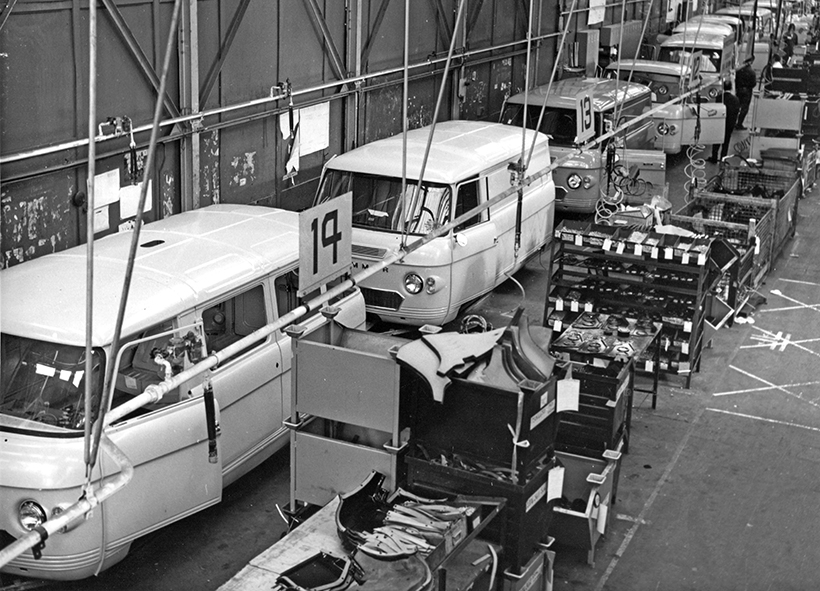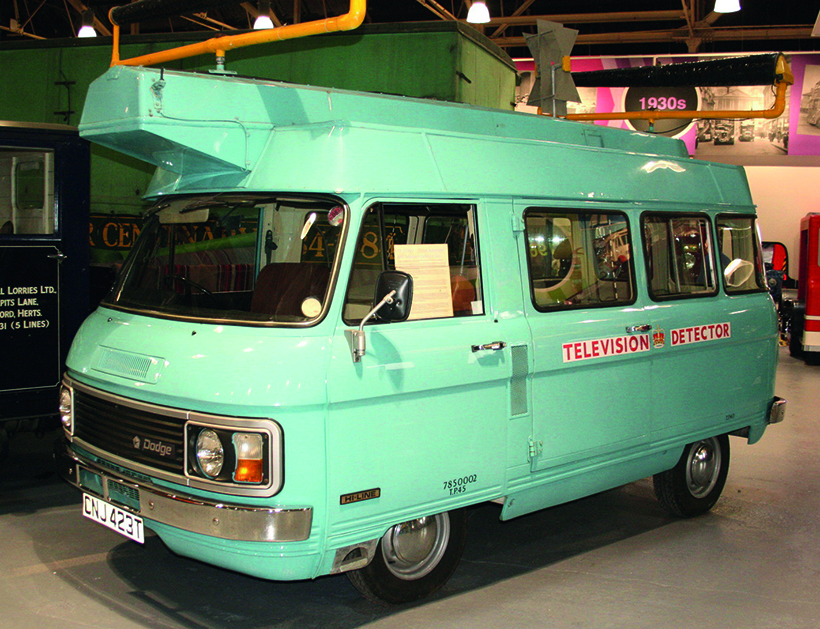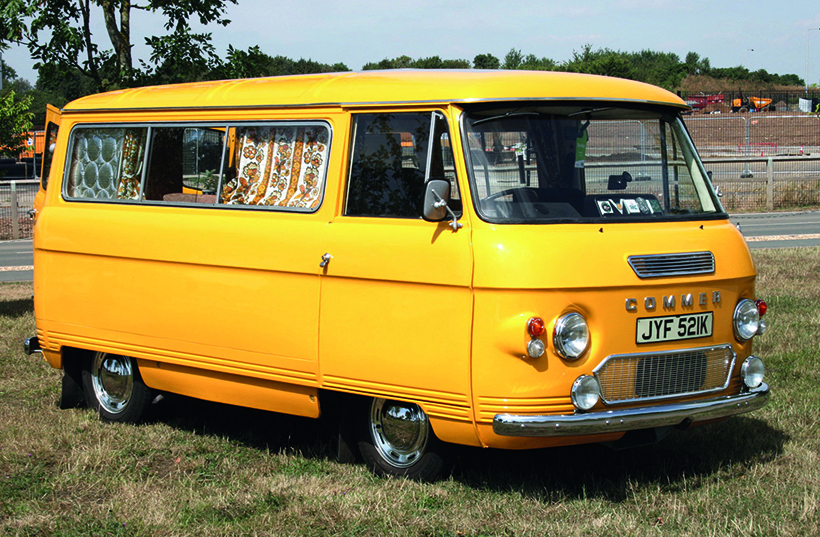Peter Simpson tells the interesting development story of the classic Commer and Dodge vans, the FC/PA/PB and the Spacevan.

Somewhat uncharacteristically, the Rootes Group had fallen behind the curve when its 15cwt ‘FC’ (forward control) van range arrived in February 1960. The other big-four makes were already there; Ford had the Thames, BMC the J2 and Bedford its market-leading and extremely innovative CA. Even still-just-about-independent Standard-Triumph had its Standard Atlas.
However, when Rootes did finally enter the market, it did so with an excellent product, and one which stayed in production for a full 23 years and changed little in that time.To be fair, that long life was, in part, down to big problems elsewhere in the group following Lord (Billy) Rootes’ death in 1964 and, of course, the government-inspired and loss-making Linwood debacle. However, the very fact that the FC/PA/PB range did remain viable and profitable throughout the 1960s and ‘70s and, with minimal input in terms of development must, surely, say something about the product’s overall quality. This was a highly competitive market sector; especially after Ford’s Transit arrived in late 1965.
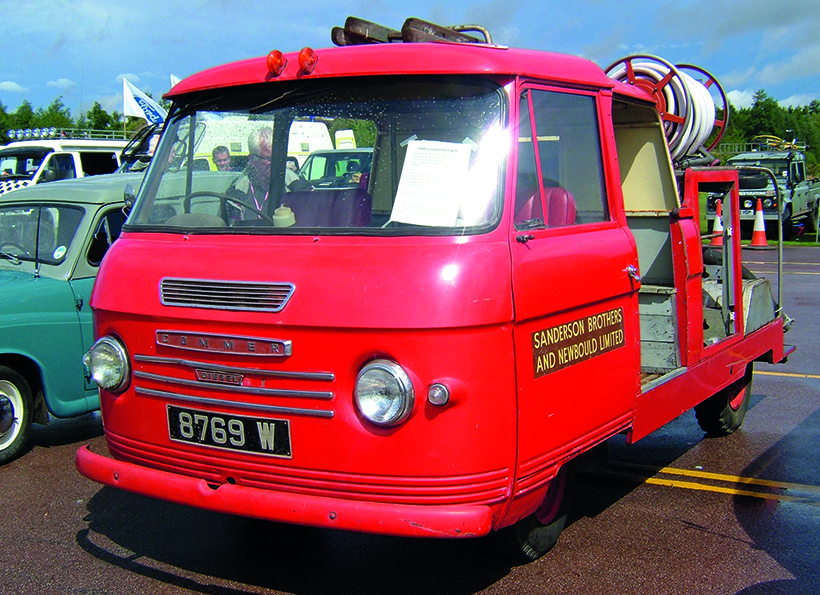
Flexible design
The Commer van was very much a classic Rootes sales and marketing-led product. Crucially, the underframe comprised a low, flat unitary construction platform which was sufficiently rigid to take a whole range of body styles without any of the body having to be load-bearing. As Rootes itself put it, ‘The big thing about building on a Commer is that you can even save some money – the chassis comes complete with an integrated steel floor, welded and ribbed to give added strength.’
This flexibility meant that Rootes was able to offer no fewer than 16 different ex-factory body styles. As well as the standard van (with a choice of hinged or side doors and an optional side-loading door), there was a choice of two pick-ups, a ‘bottle float’ (milk float) a gown van, a dropside, a high-top, a baker’s van and a mobile shop. There were also passenger-carrying versions including an ambulance, ‘light bus’ a contractor’s bus and even a small service bus which was fully-compliant with then-current PSV regulations.
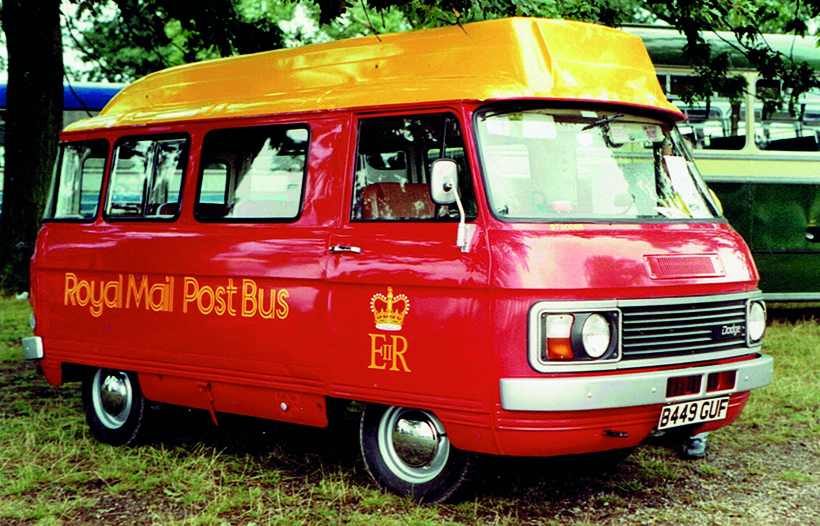
Most of the special versions were made away from the main Commer plant in Dunstable – the passenger versions, for example, were built by Rootes Maidstone – but all were sold through Rootes dealers as Rootes products. And, if you wanted something really bespoke, you could buy a chassis-cab or a chassis/front panel.
Those of you who, like me, were children in the 1960s, might know a little about this body style flexibility already as, in 1963, Corgi Toys introduced a Gift Set which illustrated this pretty-much perfectly. Gift Set 24, the Corgi Constructor Set (Commer ¾ ton chassis), comprised two Commer chassis cab units (each with a very realistic representation of the loadspace floor complete with ribbing and wheelarches), plus four, removable and swappable bodies; plain van, milk float, ambulance and pick-up truck.
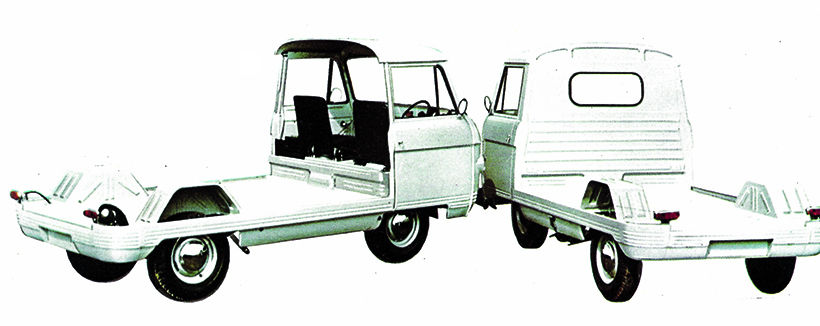
It’s not known whether the initial idea came from Rootes or Corgi (and in his definitive Big Book of Corgi, chief designer Marcel Van Cleemput gives no clue), but it seems such a perfect way of getting that body flexibility over to potential buyers via their offspring that, surely, the Rootes marketing department was involved somewhere along the line. It became one of Corgi’s most successful Gift Sets of all, selling some 345,000 worldwide until it was discontinued in 1968. It’s also one of the easiest to find today; complete, boxed examples sell for £80-£150, while played-with component parts can be found for just a few pounds.
Anyway, back to the full-size van! The body/platform assembly was designed in Coventry, under senior project manager Neil Bentham, and while some pre-production development was also done at Coventry, most of the detail stuff was done at Dunstable, where the vans were produced throughout their lives, though the basic bodyshells came in from the Pressed Steel plant in Cowley. The van’s internal capacity was an impressive 210cu.ft, usefully bigger than most rivals, and the factor which was reflected in the post-1976 name Spacevan.
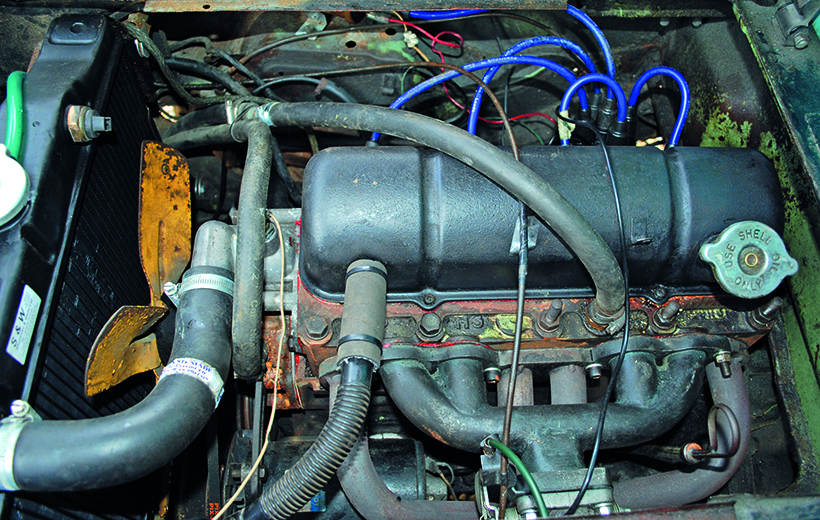
The Commer had another ‘unique selling point’ when launched; it was the first van in this class with a factory-fit diesel option. This came courtesy of the Perkins 4-99 engine, a compact and durable unit, though obviously with just 42.3bhp on tap, it wasn’t fast. No worries; economy was the name of the game, and the diesel engine added £112 to the purchase price.
Unsurprisingly, the key mechanical components came from the Rootes corporate parts-bin; the 1494cc petrol engine (replaced soom afterwards by the 1592cc version of the same engine) was taken from the contemporary Hillman Minx, the gearbox came from the Commer Express and the propshaft and rear axle from the Humber Hawk. The independent front suspension was made by mating Humber Hawk wishbones with a Sunbeam Alpine crossmember; this gave the van its characteristic narrow front track and tendency to tip if pushed into a corner too hard.
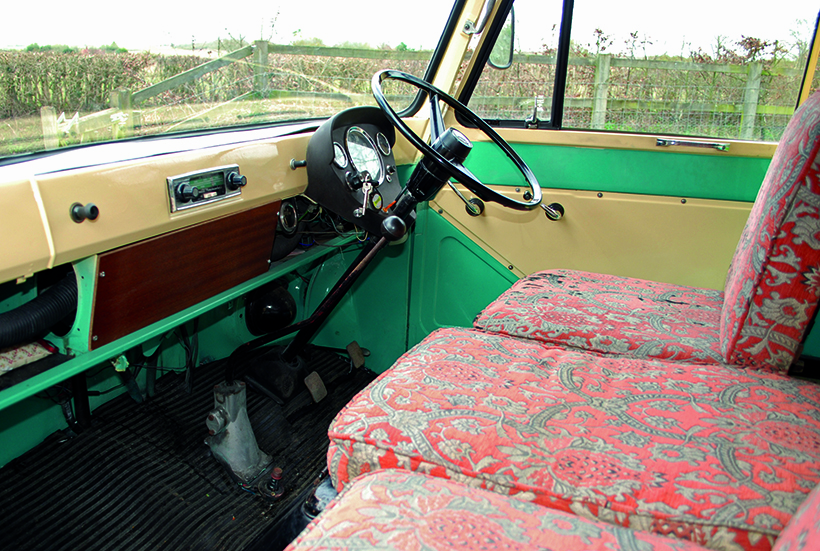
Though the Commer van’s styling was clearly ‘influenced’ by contemporary trends and therefore had some similarities with both the BMC J2 and Standard Atlas, there were also plenty of ‘Rootesesque’ styling touches such as push-button door handles and neat, ‘hideaway’ windscreen wipers. The overall layout was fairly traditional for the time – forward control and engine between the driver and passenger’s seats. Those who have driven a Commer van will also certainly remember the long gearlever with a knob so close to the dash and instrument bezel that it easy to hit knuckles when changing gear…
Vehicle development
The Commer van was an almost immediate success, though one problem emerged fairly quickly; the original design didn’t include an air intake for radiator cooling purposes in the front panel. Instead, the motor relied on airflow from under the bumper, which quickly proved to be insufficient. As a result, an aperture was soon added to production vans, and most that had been sold already were modified by dealers or owners.
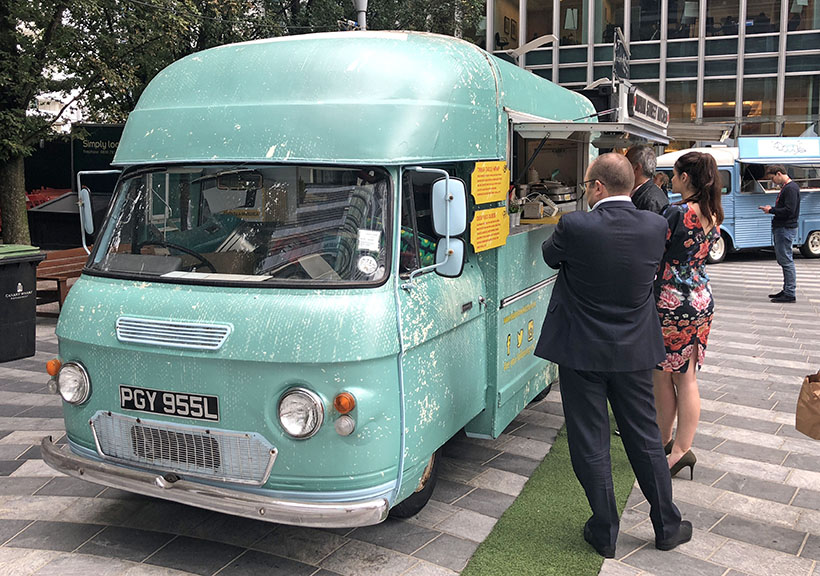
From November 1962, a larger-capacity 1-ton (2500) version was offered, and the range of factory body options had now reached 21. Then, in September 1965, an ‘intermediate’ 2000 version became available. At the same time, the engine capacity was increased to 1,725cc, reflecting changes in the Rootes/Chrysler car range, and automatic transmission was offered courtesy of Borg-Warner’s 35. Also, the front-end styling was changed slightly (minor, visible changes at the same time as crucial mechanical ones, was a common Rootes marketing trait), to incorporate a lozenge-shaped grille and, where there had previously been only a single dual-purpose sidelight and indicator, there were now two separate lights, one above the other. The auto version was never that popular; probably it’s best-known use was in Post Office TV Detector Vans, where the smoother drive was clearly an advantage.
In August 1967, the official range designation was changed from PA to PB and, at the same time, the Perkins 4-99 engine was superseded by the 4-108. A small but crucial mechanical change was also made at this time; from now on, the parking brake worked on the front wheels. Oh, and an alternator replaced the dynamo.
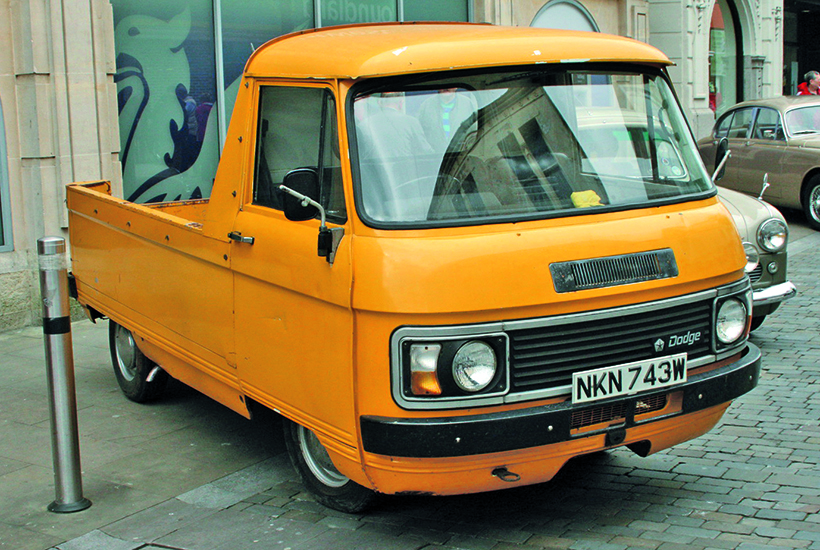
That, though, was basically it for the next nine years. There was a certain amount of minor tweaking of things like carrying capacity and, from May 1971, the dash layout was changed and a ‘De-Luxe cab’ option became available, with foam-padded door trims, deeper-padded cab seats and, before they became compulsory two years later, hazard warning lights. Chrome-plated quarter bumpers also made an appearance. Then, from August 1972, the petrol engine – which had hitherto only been available as a low-compression unit – became orderable in high-compression form, raising the power output from 52hp to 58.
Goodbye Commer, hello Dodge
As intimated earlier, the Rootes Group had ‘issues’ throughout the 1960s, and the hitherto successful and profitable business became a consistent loss-maker. It seems Billy Rootes knew troubled times were coming and, shortly before his death, he arranged for Chrysler of America to take a minority share in the business. Following his death, though, the problem deepened and Chrysler eventually took full control in 1967. One almost-immediate consequence of this was the closure of the Dodge plant in Kew, West London (which Chrysler already owned), following which Dodge moved to the Commer/Karrier plant in Bedfordshire.

The Commer FC, however, was little-affected by all this. Though now a definite also-ran against the Ford Transit and Bedford CF, it was still selling, still profitable and the new management was fully occupied dealing with plenty of issues elsewhere. From 1976, Chrysler dropped all the Rootes model names, with remaining Rootes cars becoming ‘Chryslers’, though none survived for long. For the commercials, the Dodge name was used. At the same time, Chrysler secured significant state aid; the government had just baled-out BL, and Chrysler felt that it was entitled to similar levels of support. It was suggested that, without this financial injection, it would simply walk away and close the entire UK operation, costing tens of thousands of jobs. As a result, aid was forthcoming, but it was conditional on commitments to produce new models and update the ‘Spacevan’. This name was used officially from 1974, although the 1972 brochure contains a hint of what was to come, by referring to the Commer as the ‘Space Ace Van’.
Thus, in 1977, the ‘new’ Dodge Spacevan arrived; a revised version featuring a new, contemporary-style plastic grille, a new cab interior and… not a lot else, actually! To be fair, there were a few tweaks here and there, such as bigger rear lights, but most of these were due to changing component availability and Construction & Use regulations, rather than to improve the product. By now, the vast majority of vehicles were being made for the Post Office though, for mail purposes, the BL Sherpa family was sometimes preferred as, being narrower, it was better at getting into small spaces.
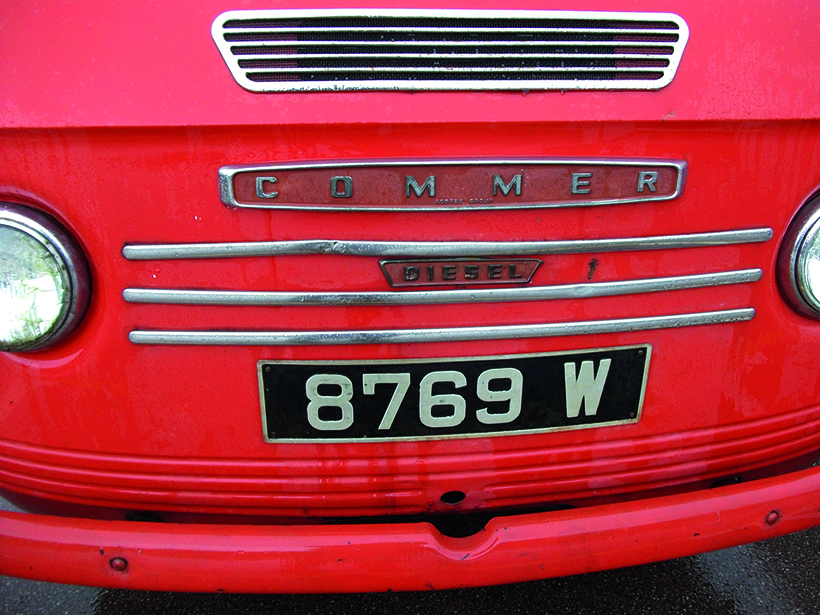
Production finally ended in early 1983 with the last vans, unsurprisingly, being for British Telecom. By this point, what remained of the former Rootes Group had been bought by Peugeot-Citroen, and the Spacevan was the final Rootes-era product to go. It was said at the time that the van’s braking system couldn’t meet new safety regulations though, in truth, it was more a case of reworking not being cost-effective for a van that was already well past its sell-by date. To the end, there was a choice of low or high-compression petrol engine, or the Perkins diesel; and, while mailvans were normally diesel, Post Office Telephones and subsequently BT preferred petrol power.
Today's survivors
As usual with light commercials, most of today’s survivors do so by virtue of having had unusually light working lives or, of course, being used as campers. The FC body style lent itself to camper conversions due, in part, to the entire structural load being carried by the low platform, but also because it was slightly wider than usual. Most of the major caravanette companies produced Commer-based campers over the years, many of which are preserved in their original form. Some, however, have been converted into mobile food outlets, and are popular in trendy, inner-city locations because they look different and, as petrol-powered Historic Vehicles, they’re exempt from most LEZ-type charges.
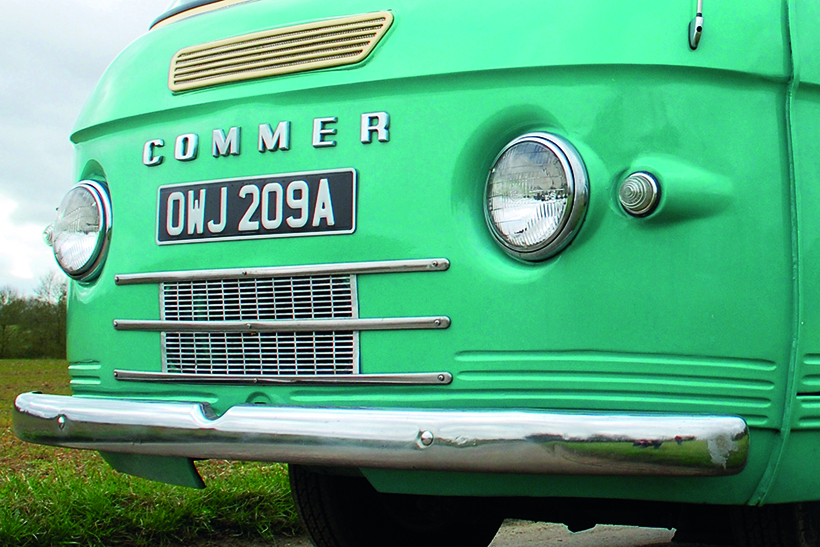
With all the vehicles under consideration, corrosion’s the big killer, though repair sections are available for the lower body sections. The other common trouble spots include the usual roof guttering issues, and the load floor, especially around and behind the rear wheelarches. The mechanical side is generally less of an issue; parts are available and maintenance is generally straightforward. However, engine removal is a major operation involving either removing the crossmember and taking it out from underneath, or removing the windscreen to get an engine crane in from above and through the cab.
Finally, in recent years, there’s been new interest in these vans from a slightly unexpected source – the surfing fraternity! The market here is for vans with the original van shape and rear windows – which sort-of look similar to the – VW ‘bus’ that such people really want but can’t now afford. But such vehicles sometimes change hands fairly regularly, as the novelty wears off.
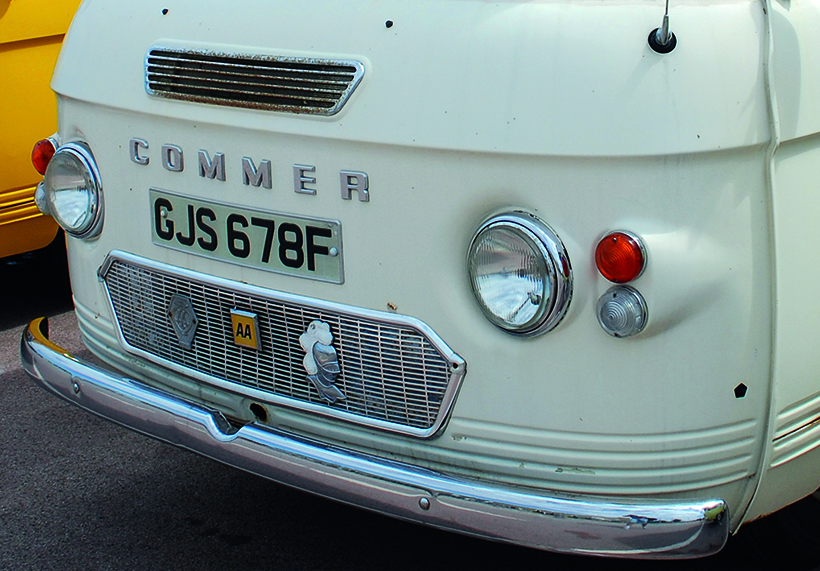
For a money-saving subscription to Classic & Vintage Commercials magazine, simply click here
